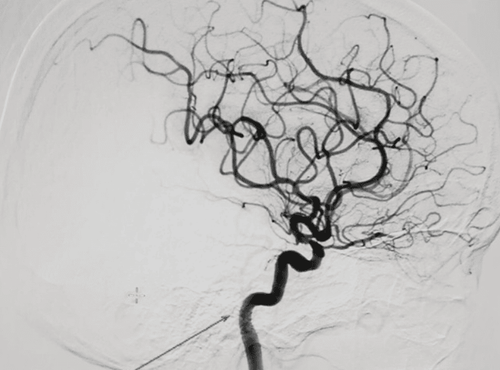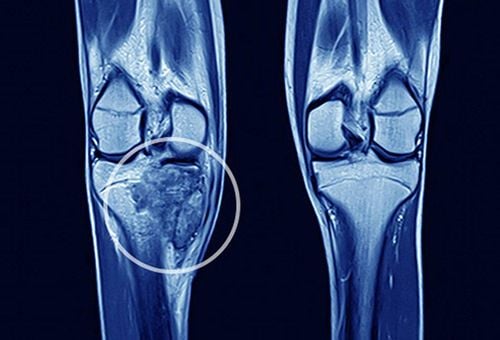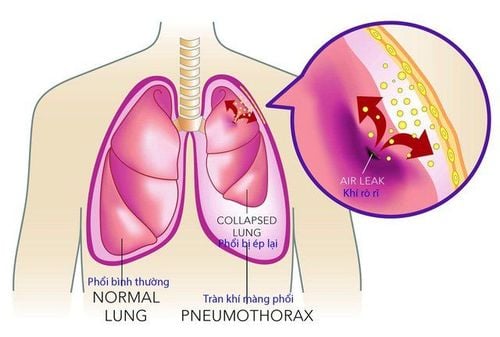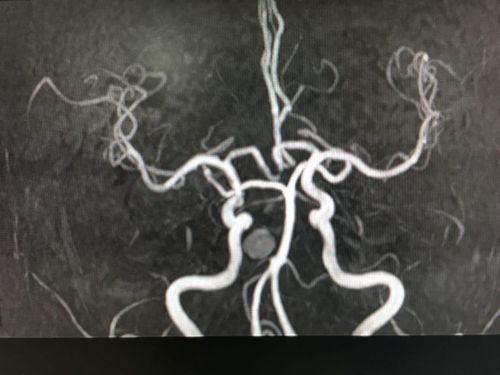This is an automatically translated article.
The article was professionally consulted with Master, Doctor Nguyen Huy Nhat - Respiratory Doctor - Department of Medical Examination & Internal Medicine - Vinmec Danang International General Hospital.Coughing up blood is a dangerous emergency, if not examined and treated early, the patient can die from respiratory failure or hemorrhagic shock. However, at present, hemoptysis can be controlled by bronchial artery embolization. This is a minimally invasive method, performed through the femoral artery, helping the patient recover quickly.
1. Causes of coughing up blood
Coughing up blood can originate from blood in the nose, sinuses, pharynx, blood from the larynx, trachea, or blood from the lungs. Of the cases of hemoptysis from the lungs, more than 90% are due to lesions in the branches of the bronchial arteries.In addition, in case of severe lung injury, other arterial branches such as thoracic aorta, abdominal aorta, thoracic-abdominal artery also supply blood to lung lesions, this is also the source of blood flow. Blood supply is important in hemoptysis.
The most common causes of bronchial artery lesions, leading to hemoptysis, are: bronchiectasis, pulmonary tuberculosis, lung abscess, lung parenchymal trauma or pulmonary fungal infection. In Western countries, the leading cause of hemoptysis in young people is cystic fibrosis, but this disease is quite rare in Vietnam.
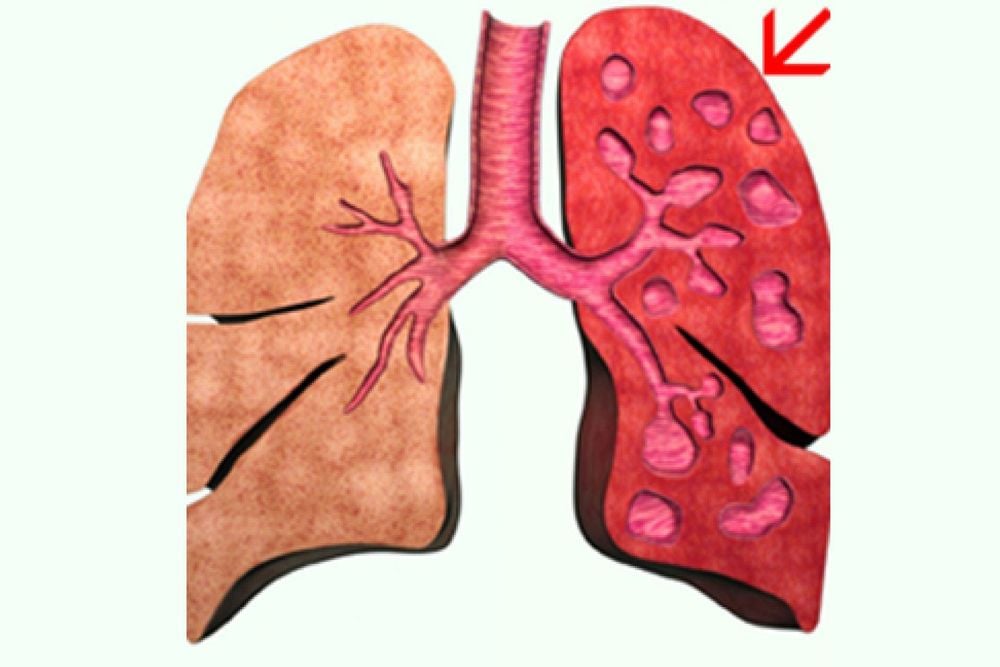
2. Bronchial artery embolization in the treatment of hemoptysis
Coughing up blood due to bronchiectasis is a serious complication with a high recurrence rate, so treatment must be carried out carefully and promptly, otherwise the patient may die.Severe hemoptysis will cause damage to the pulmonary bronchial blood vessels. The basic treatment of hemoptysis is medical treatment. If hemoptysis is severe and prolonged, bronchoscopic hemostasis, lobectomy, surgery to clamp hemostasis, arterial ligation... but these are all complicated procedures.
Currently, thanks to the advancement of medicine, doctors have successfully performed the treatment of cough with bronchial artery embolization (BAE), which is a minimally invasive endovascular treatment. , bring high efficiency, often applied in hospitals with respiratory specialties.
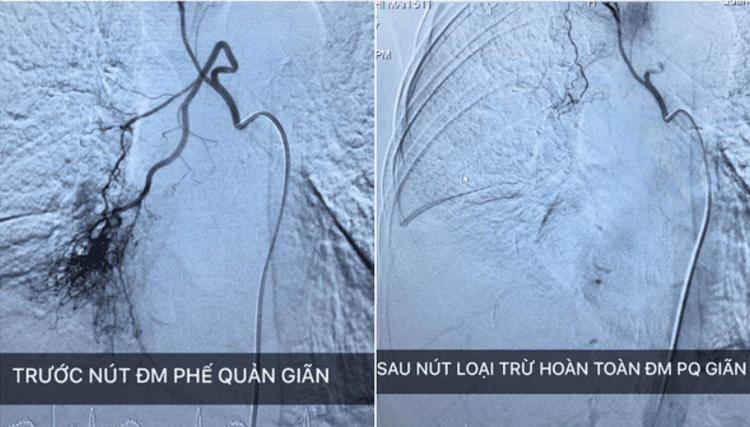
3. Steps to perform bronchial artery embolization
Bronchial artery embolization is indicated in the treatment of recurrent severe hemoptysis or mild, moderate hemoptysis.After being assigned by the doctor to perform bronchial artery embolization, the patient will be given local anesthesia in the groin area. Next, the technician will thread a catheter (microcatheter) into the femoral artery, up the aorta, and then into the bronchial artery. These operations are performed under the guidance of the bright screen of the digital subtraction angiography (DSA) machine.
Contrast is injected to take pictures of bronchial arteries, helping doctors identify damaged bronchial artery branches causing hemoptysis.
Then, a smaller size catheter is continuously inserted selectively into the damaged bronchial artery to block the embolus. This artery will be occluded with polyvinyl alcohol (PVA) beads or with embolization coils (embolization particles are usually 0.3-0.5mm in diameter).
After the procedure, the catheter was removed immediately, the patient was bandaged for 8 hours to prevent bleeding. The patient should lie down to rest and be able to return to normal activity after removing the bandage.
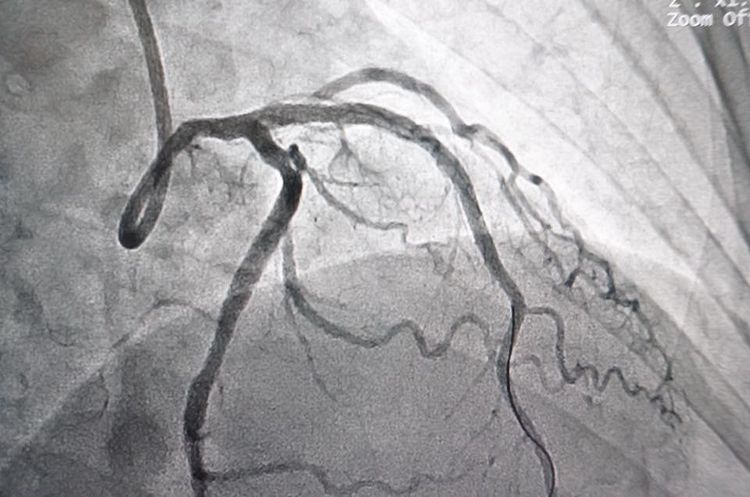
4. Time to perform bronchial artery embolization
The duration of the bronchial artery embolization procedure usually ranges from 60 minutes to 90 minutes. The patient does not need complete anesthesia but only needs anesthesia (about 5ml of local anesthetic) in the groin area.Vital functional parameters such as: blood pressure, patient's heart rate will be continuously monitored throughout the duration of arterial embolization and continue to be monitored in the first 4 hours after the procedure.
The bronchial artery embolization procedure is performed by an interventional radiologist (also called an Interventional radiologist). The procedure is done in the angiography room, also known as the Cath lab.
5. Recovering from bronchial artery embolization
When performing bronchial artery embolization, the patient did not feel any pain or discomfort. Patients can return to eating and drinking 2 hours after the procedure. On the other hand, the patient can also walk and return to normal activities after 18 hours. Usually patients are discharged after 3 days. This is a new technique that reduces the invasiveness, has a low incidence of complications and is very effective in the emergency treatment of hemoptysis due to bronchial artery dilation.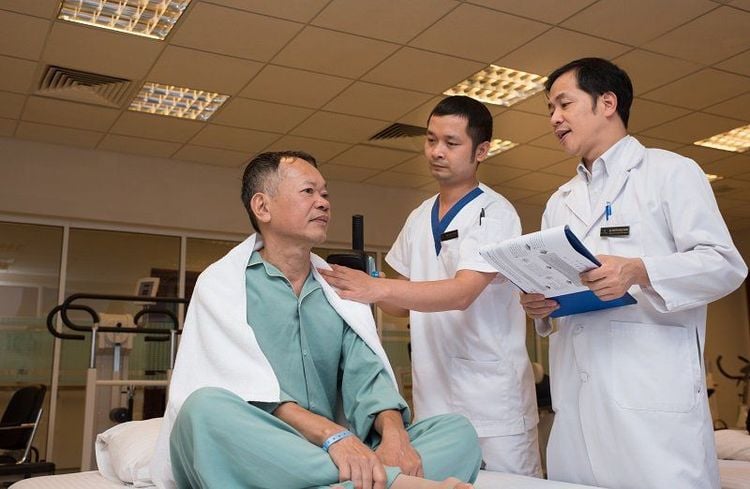
6. Possible complications after bronchial artery embolization
Some possible complications after bronchial artery embolization are as follows:Feeling of tightness in the chest after the procedure, usually disappears after 3-5 days, quick relief when taking pain relievers. Spinal cord infarction, a serious but very rare complication, is caused by a branch of the artery that feeds the spinal cord with a branch connecting the bronchial artery. Symptoms: Weakness in both legs and may improve gradually in 4-6 weeks. Local complications: Contrast allergy, hematoma in the thigh area, femoral vein fistula. Hemoptysis is a common and dangerous clinical symptom and has a high mortality rate (even within a few hours). Drug hemostasis is sometimes not very effective, while endoscopic and surgical hemostasis is sometimes very limited and takes a long time. Bronchial artery embolization is a new method and is being widely applied. With many large centers, this is the first method for hemostasis in the case of hemoptysis. Quick and effective symptom improvement, minimally invasive. Sometimes BAE is the only treatment option for cases of hemoptysis that are difficult or impossible to treat surgically.
Vinmec International General Hospital is the address for examination, treatment and prevention of diseases. When performing the examination process at Vinmec, customers will be welcomed and used modern facilities and equipment along with perfect medical services under the guidance and advice of experts. Good doctors, well-trained both at home and abroad.
Please dial HOTLINE for more information or register for an appointment HERE. Download MyVinmec app to make appointments faster and to manage your bookings easily.





